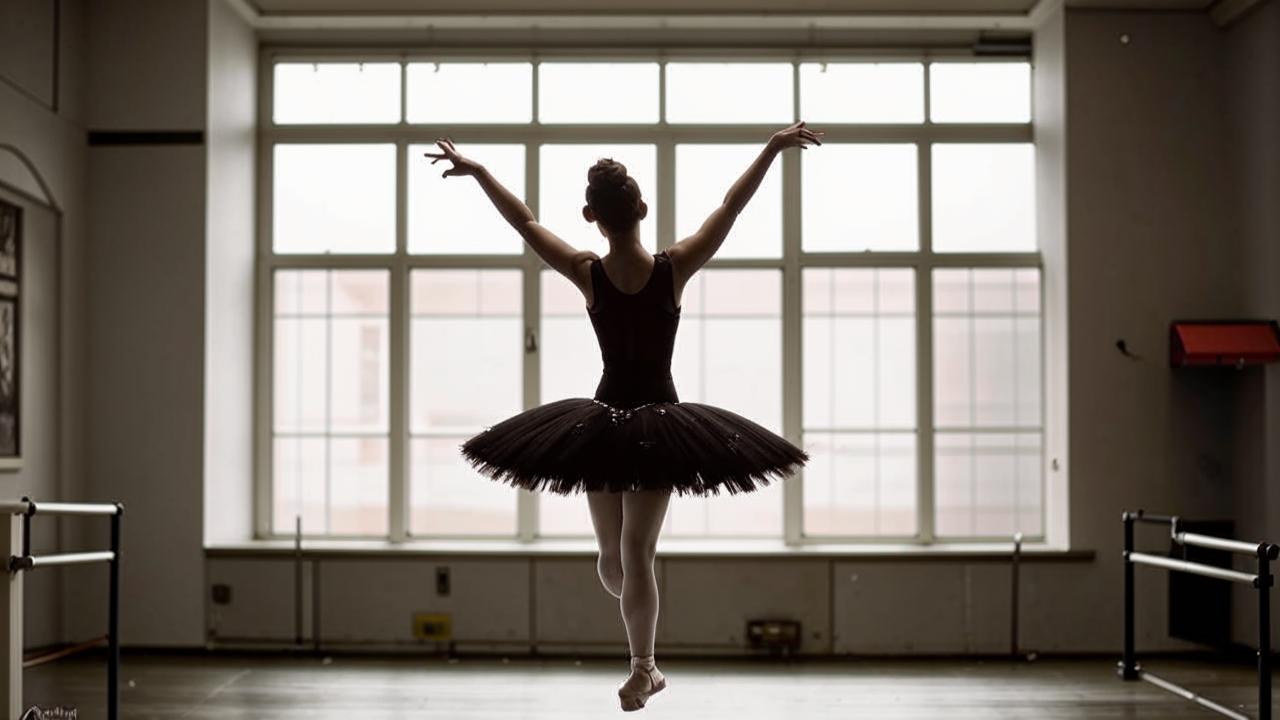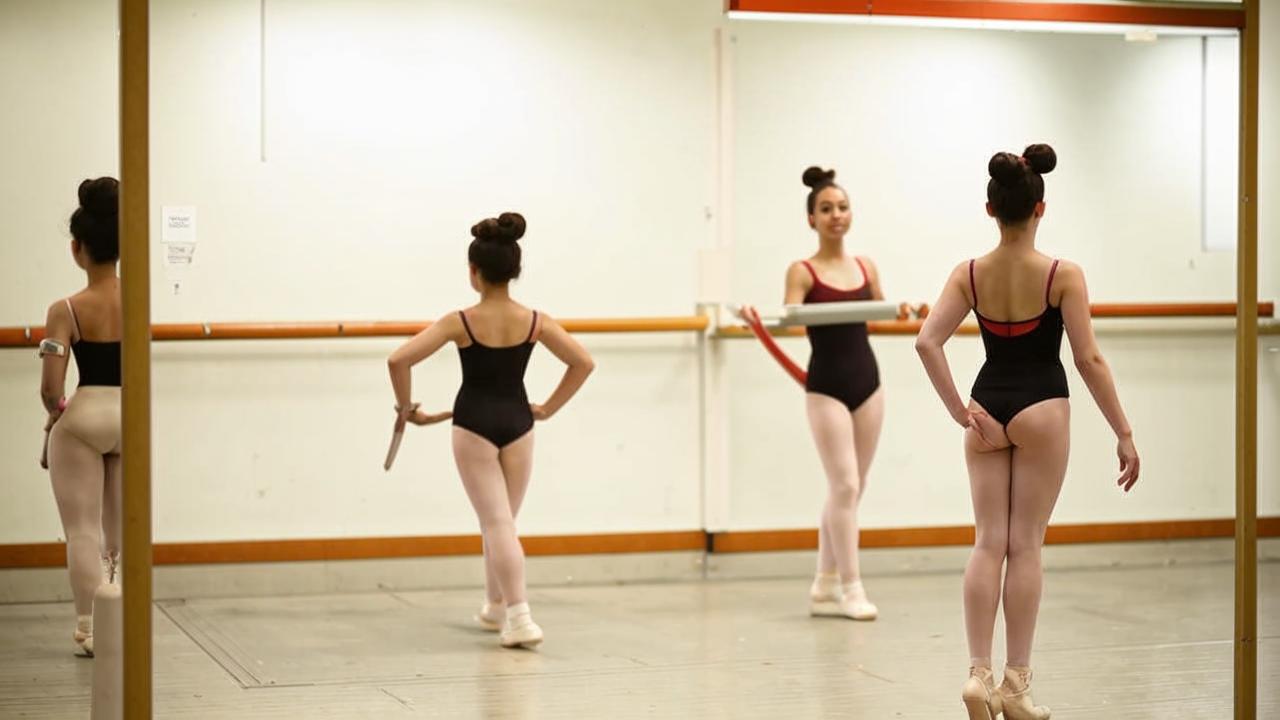
head of the teacher training department of the international network of ballet and stretching studios LEVITA
“Just as it is impossible to build a solid house without a strong foundation, it is impossible to put on a beautiful and harmonious dance without a well-developed choreographic base. Especially in the ballet genre. To master independently the basic positions of hands and feet – it is real. The main thing is to show patience, attention, diligence and do not try to learn everything at once. Follow the instructions, practice each position one by one and improve your ballet skills for future full-fledged productions”.
Basic leg positions
There are several basic positions that make up the combination of classical dance. Let’s break them down from simple to complex and start with the positions of the legs – there are six of them in total, and the sixth one is conditional. We will study it first.
Sixth position
This is the simplest and at the same time the most infrequently used position in ballet. It is most often seen in modern staging. In this position, the starting position is as follows: the feet are together and the toes are pointing forward. It’s very simple – everyone can do it.

Now let’s move on to the more intricate five basic positions, which are much more common in ballet and are also used in other dance styles.
First position
Heels stand together, toes turned outward, knees turned toward the toes. Ideally this position looks like a straight line, but for non-professional dancers it can be performed a little looser like the others so as not to hurt the joints.

Second position
The same as the first one, but wider. Now between your heels there is a space approximately equal to the length of one foot. The pose can be built in this way: put, for example, the left foot turned out, and the right foot – toes to the heel of the left foot; fix the right heel and turn the toes. This will be the easiest way to get into the second position. Otherwise, the rules are the same from the first: knees pointing sideways behind the toes, body taut.

Third position
It is also rarely used in classical ballet. It refers more to historical and everyday dances from the times when girls wore puffy skirts and corsets. But despite its rare use, the third position is considered classical.
Starting position: one leg, for example, the left leg, stands twisted, toes pointing to the side, the right leg also stands twisted, but its heel covers the left, knees pointing at the toes, hips turned. If at first this leg position feels too uncomfortable for you, you can turn your legs forward a little. The third position can start either with the right leg or with the left leg, when the leading leg is the one that is in front.

Fourth position
Considered one of the most difficult positions in ballet, its starting position is: the feet are parallel to each other, but one of them is forward, they are turned in different directions and keep a distance of one foot between each other. To easily display this position, leave the left foot in a turned out position, place the right heel against the left heel, bringing it forward, lock the toes of the right foot on the floor and turn the right heel forward. In this way, you will have your right heel in front of the toes of your left foot and the toes of your right foot in front of your left heel. This is a very difficult position, because it’s hard enough to keep the eversion of the legs and not twist the pelvis or not “bend” the knees. Because of this, the fourth position is considered the most technical and professional.

Fifth position
Ballet dancers dance in this position most often. Starting position: one foot is completely in front of the other, that is, the right heel is in front of the toes of the left foot or vice versa. This is similar to the fourth position, except that there is no distance between the feet, they are pressed tightly together. It is also quite difficult, because it requires good alignment and preparation.

Basic hand positions
With the hands in the basic positions everything is simpler: three basic, preparatory and allonge. In general, in all basic positions it is important not to touch the body with your hands: it is as if you are holding something, and the air between the hands and the body is preserved. In addition, the palms are turned inward and do not “twist”, the elbows are pointed clearly to the side.
Pay special attention to the wrists and the position of the fingers, because they are especially important. You should have fairly relaxed hands, but nicely held fingers that are close together, but with air between them. The middle finger should be turned slightly inward and the thumb should be aiming towards the middle finger.
Preparatory position
This is created from a starting position where your hands are shaped like an oval and are down, slightly away from your feet. You can easily assume this position with a simple algorithm: spread your fingers wide apart and tense your hands, then clench your fists and sharply unclench them back, reset the position, give your hands a good shake and simply lower them down, “picking up” your fingers. Technically, you’ll have a natural hand position that is slightly more toned and extended than usual. This position of the fingers is observed in all positions.

First position
Starting position in the first position: the arms are raised slightly above the hips, the position becomes more round, as if you were holding a watermelon and doing it at the level of your navel. Elbows raised, shoulders down.

Second position
Done from a similar starting position, but now you spread your arms out to the sides. It is important to make sure that the shoulders are lowered and the elbows are raised. Create such a position that from the shoulder you can let a drop of water run down your arm, which will smoothly roll down along the bend line. That is, your arm is not at the same level, but slightly raised at the elbow, the wrist is slightly lowered. At the same time, the arm is not scooted above the shoulder, the palms are directed at each other.

Third position
Starting position: arms are raised above the head, elbows are again separated to the sides, shoulders are lowered, neck is stretched, arms form an oval. In this position it is important that the arms do not “go” far behind the head. You can check the correctness of the position by a simple action: direct your gaze straight ahead, and then lift your eyes and look up with your pupils – in this position you should see your little fingers. If you see them, it means that your hands are at the right level. If not, then you need to move your hands a little forward. If you can see your hands without lifting your eyes, then you should move them back a little.

Allongee
This is a small arm swing that can be performed from the preparatory and second positions. Allonge is most often used in arabesque and some other ballet poses. For example, in the preparatory position, you can straighten your elbow slightly, extend one arm and wave it with your fingers looking at them. This would be the allonge position. The same from the second position: you lower your wrist slightly, extend your elbow, palm turned towards the floor, you look at your fingers and smoothly move your hand from the second position to the preparatory position.

Bonus pose – arabesque
Let’s take apart additionally such a hand position as arabesque. This is a pose in ballet, which has standard and variant formats. If we consider the standard variant, then this is a position in which the hands take a certain position, and the leg is raised up. There are four different arabesques.
To better understand the position of the body, imagine that you are standing sideways to the audience, Suppose you are standing with your left side to the audience, in which case the right arm is extended in front of you and the left arm is extended to the side. Both of them are lined up in allonge position, i.e. the elbows are extended, but not completely, they are slightly raised. The palms are pointed towards the floor, the fingers are nicely held in a collected position, the right foot is supported, the left foot opens and rises up, opening backwards.
The first arabesque
While you are just starting to learn the position, the unsupported foot can be left on the floor and placed on the toes. In this way, you will have the first arabesque, which is essentially a fully open pose. Make sure that your body is not blocked by your hands, your unsupported leg remains open, and your whole body is clearly visible.

Second arabesque
The second arabesque: the legs are open and the arms are closed. That is, the legs remain in the previous starting position, but the arms are swapped. The left arm is brought forward and the right arm is moved to the side. In the second arabesque it is important to follow the gaze, because if in the first variant it is directed forward, on the leading hand, then in the second – on the viewer. If you are standing, for example, in front of a mirror, then you need to see in the reflection and the right hand too, that is, the gaze is slightly pulled back.

The third arabesque
The third arabesque: closed leg, but open hand. Here the legs are swapped: the left one becomes the supporting one, and the right one is pulled back or raised up. Hands in this case return to the position in which they were during the formation of the first arabesque: the right hand is extended forward, and the left hand is taken to the side. The gaze goes forward, behind the right hand.

Fourth arabesque
The fourth arabesque is a completely closed pose, where the back is also included in the work. The left leg remains supported, the right leg is drawn back or raised up, the left arm is brought forward and the right arm is withdrawn to the side. The gaze is directed at the spectator. In addition, you should make an effort and try to make the body slightly “twisted” so that you can see your right hand. The direction of the gaze should be as if you want to see even your shoulder blade. The fourth arabesque is a very beautiful, but quite difficult to perform classical ballet position.

Now you know the basic ballet positions of the arms and legs, on which the basic transitions and many movements are based. For example, if you change your arms from the first position to another, in ballet this is called a por de bras. The standard por de bras provides for a strict order of movements, but it is also possible to perform a non-fixed algorithm: change your hands at will, add something of yourself. This way it will become your individual dance ligament.






